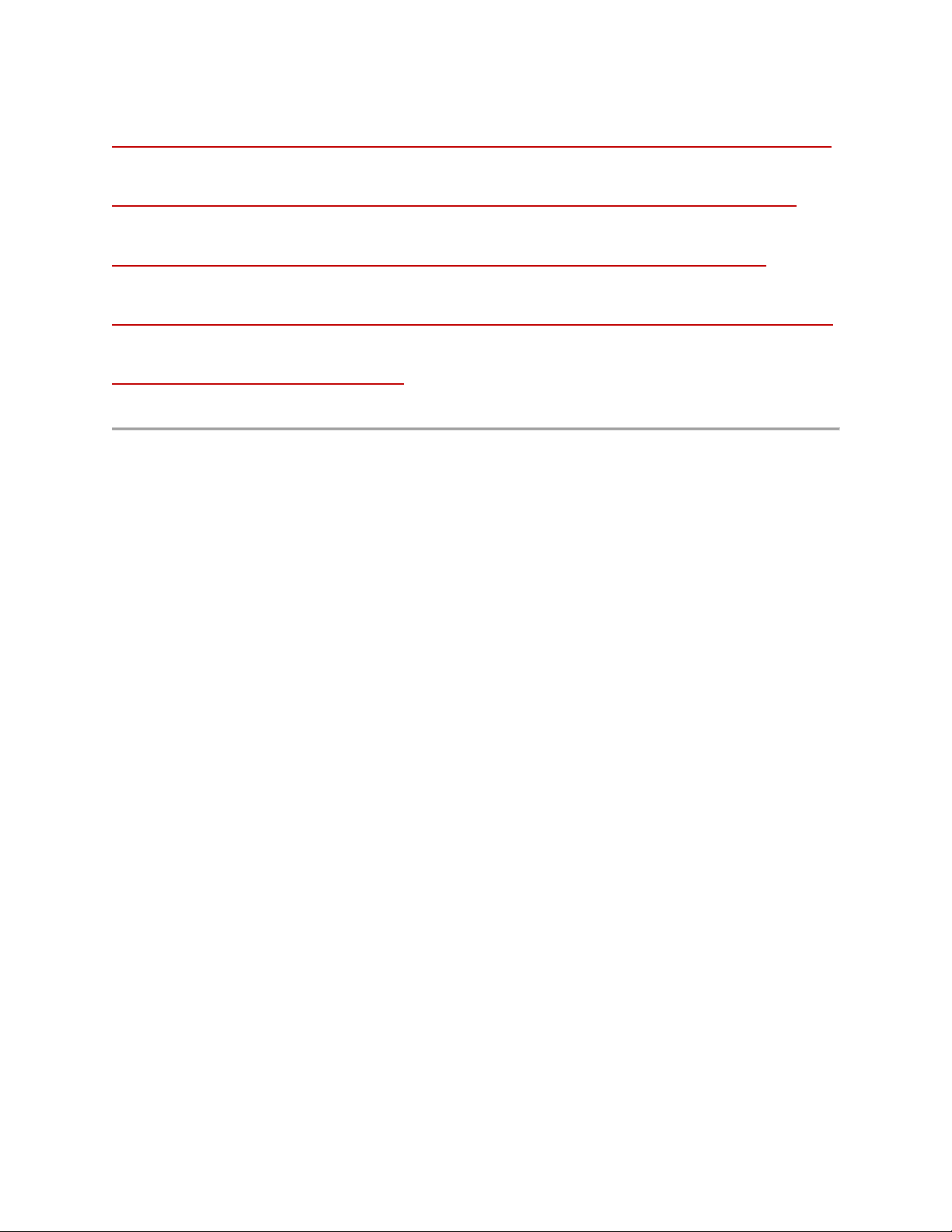
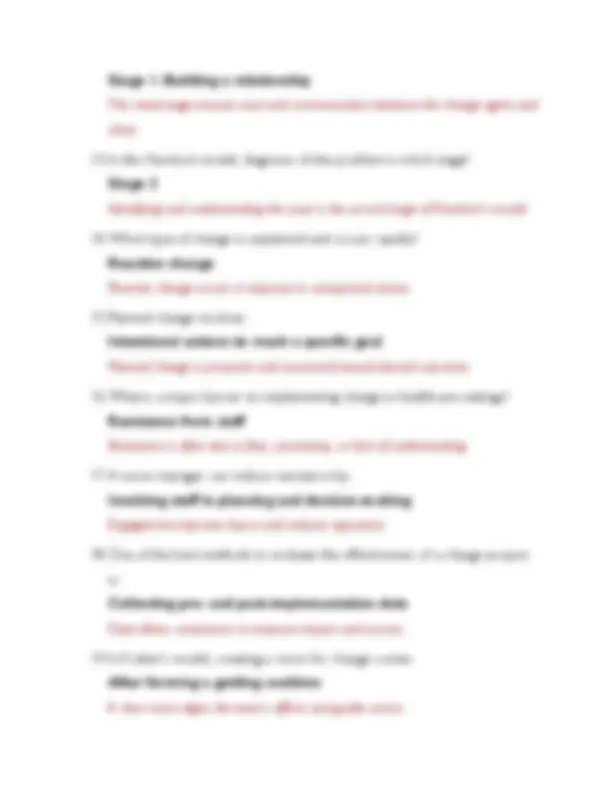

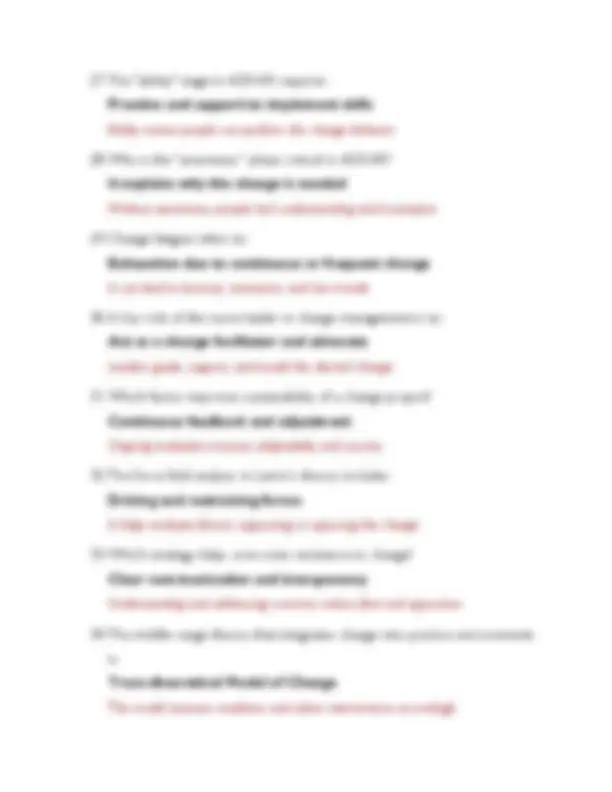
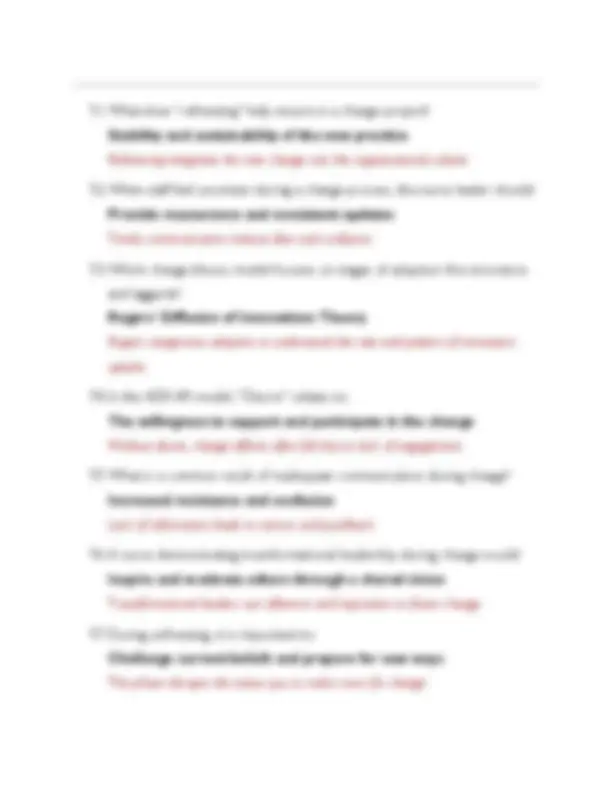
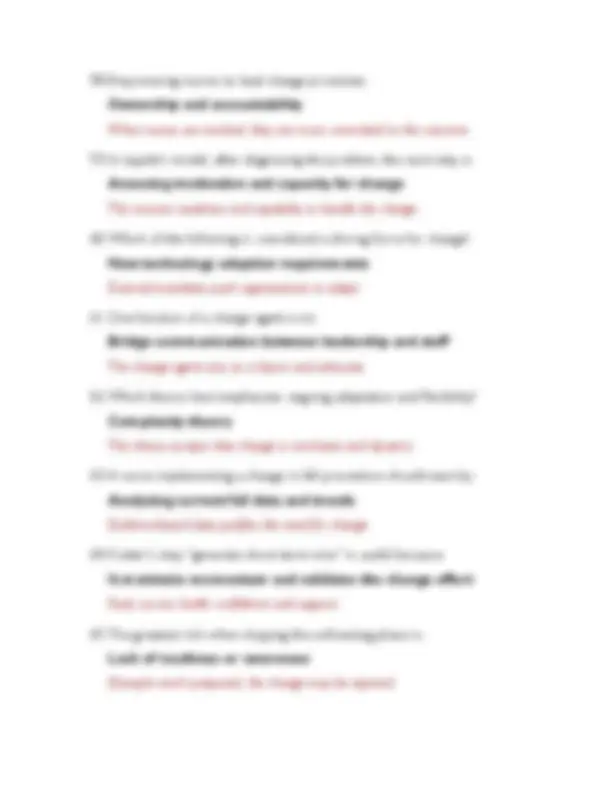
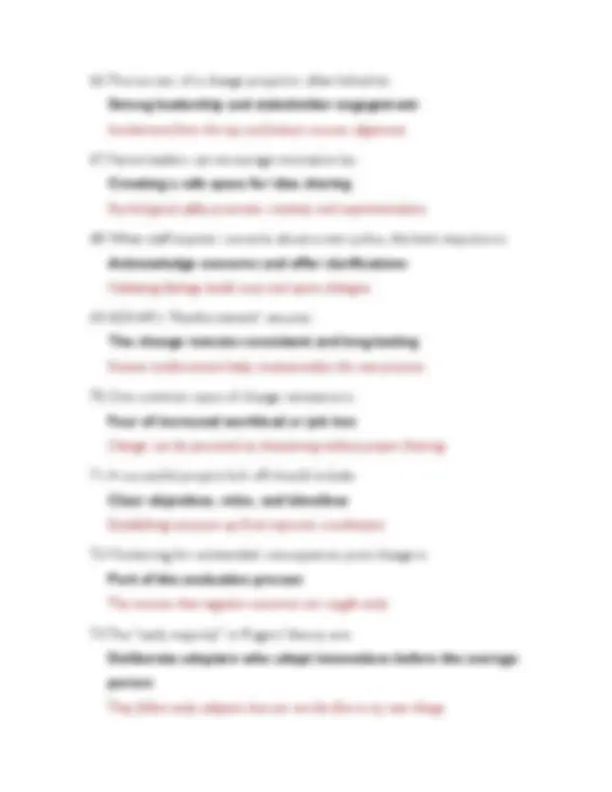
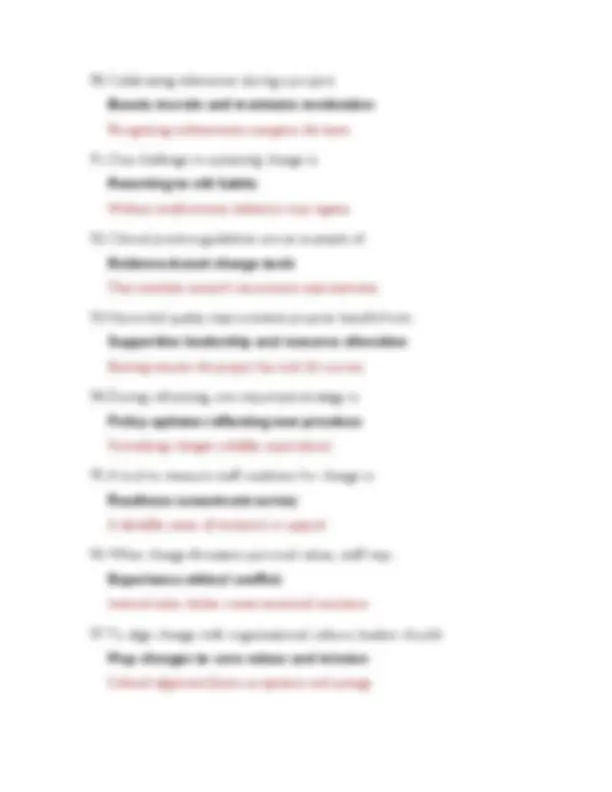
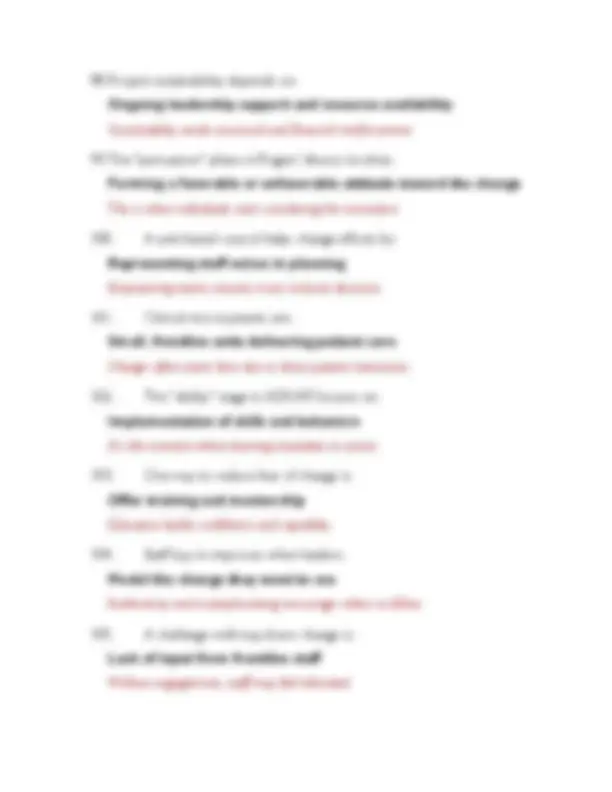
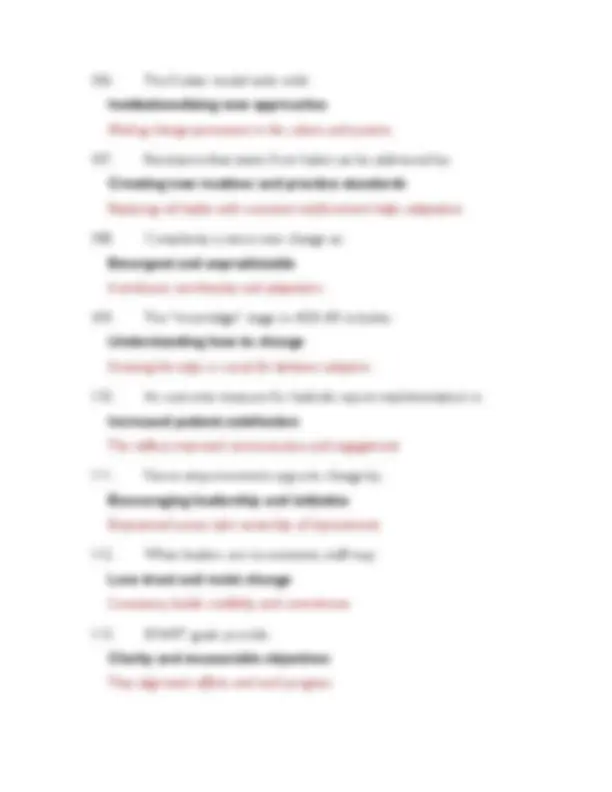

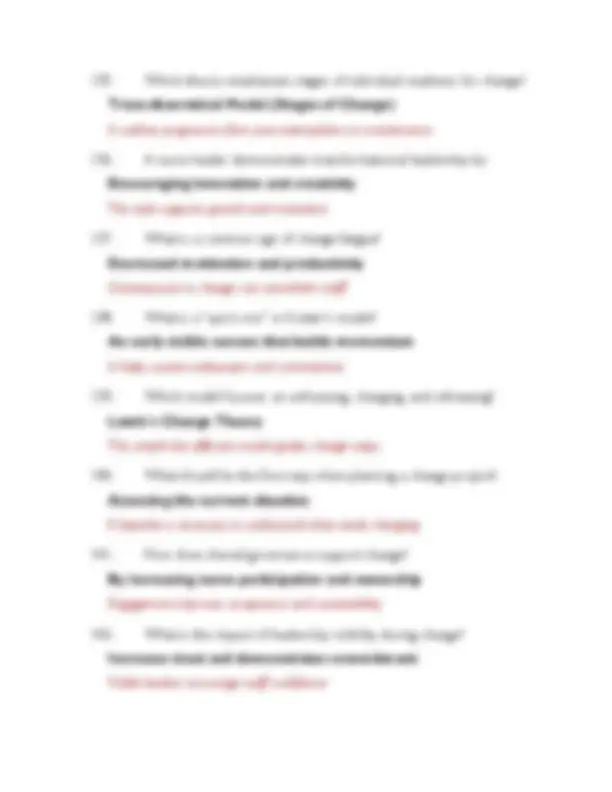
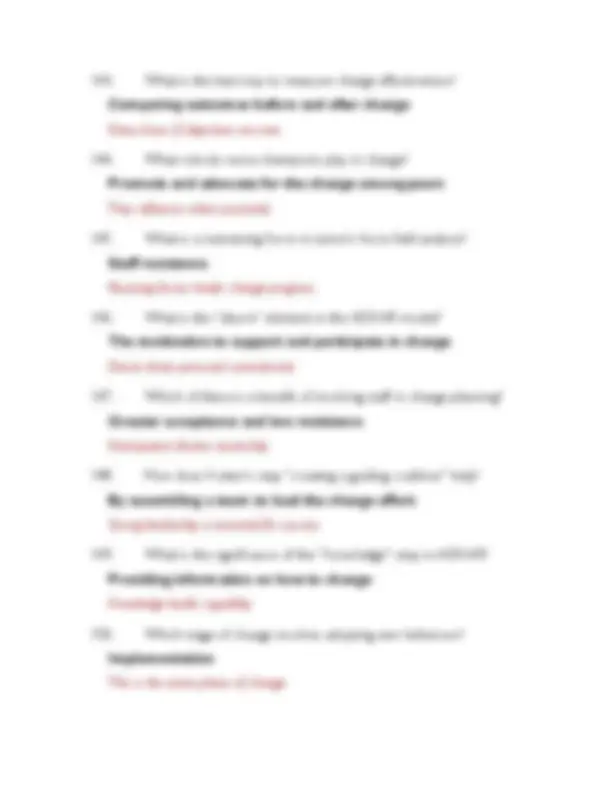
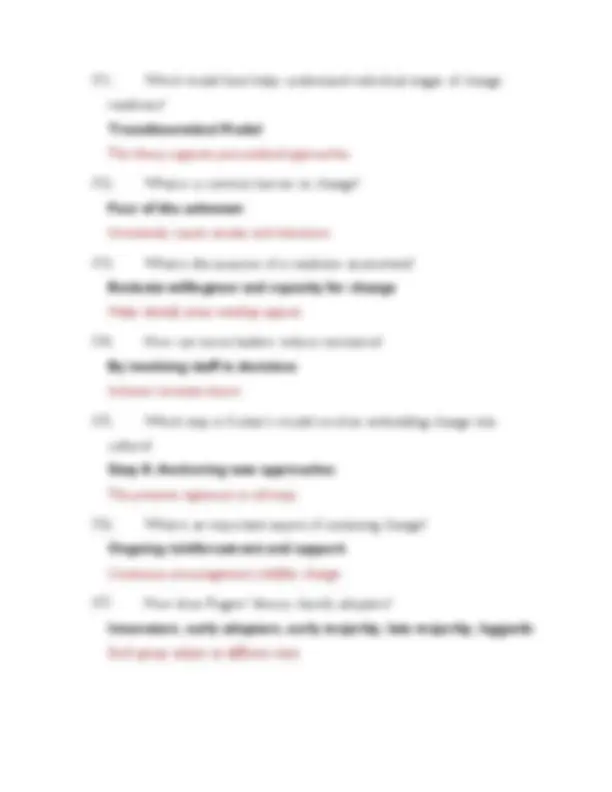
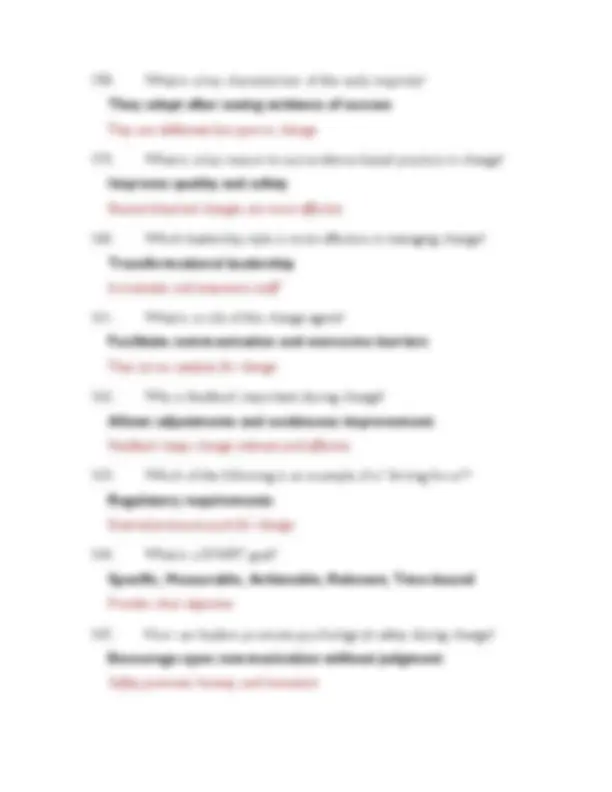
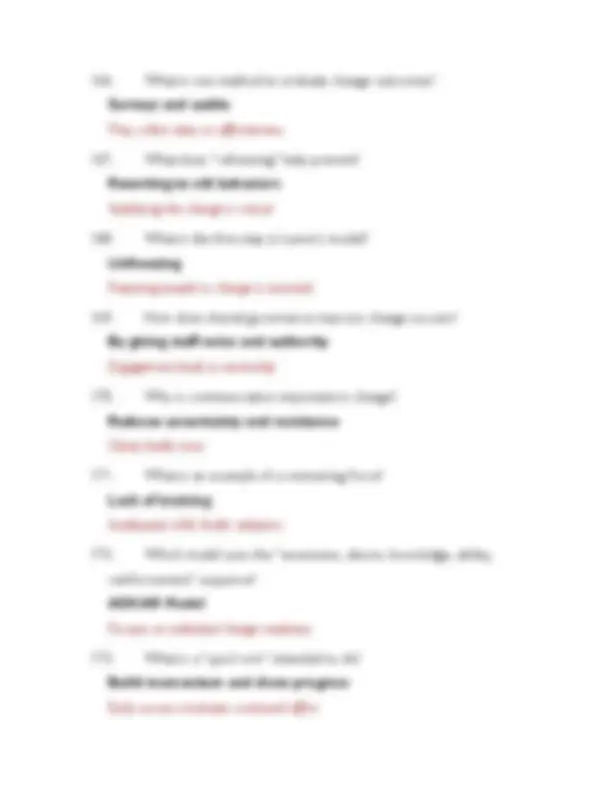
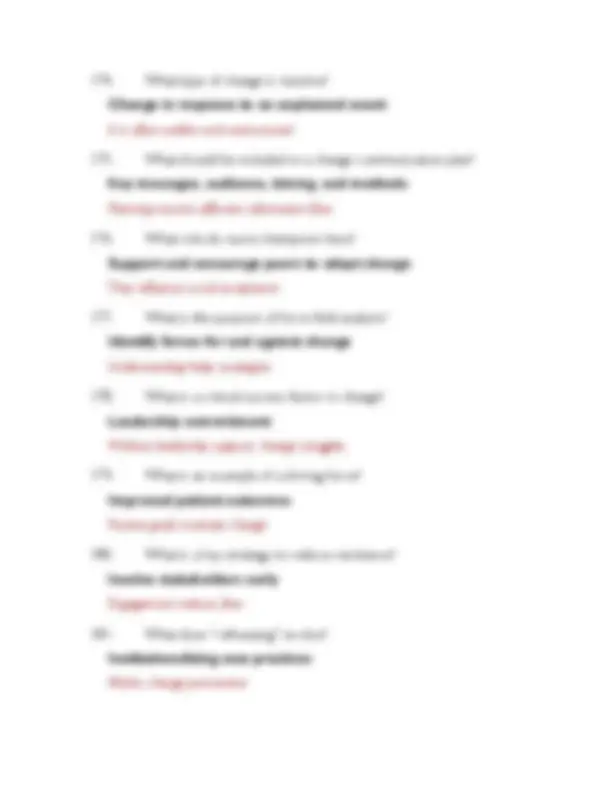
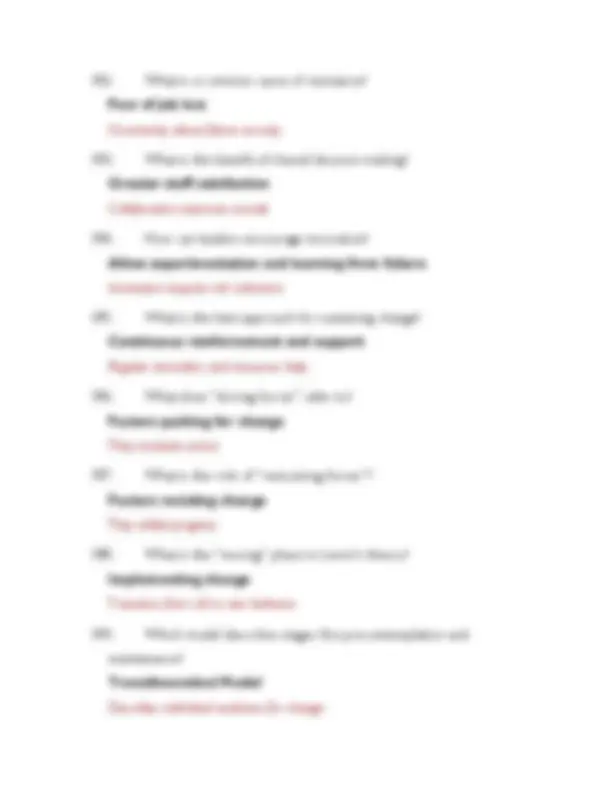

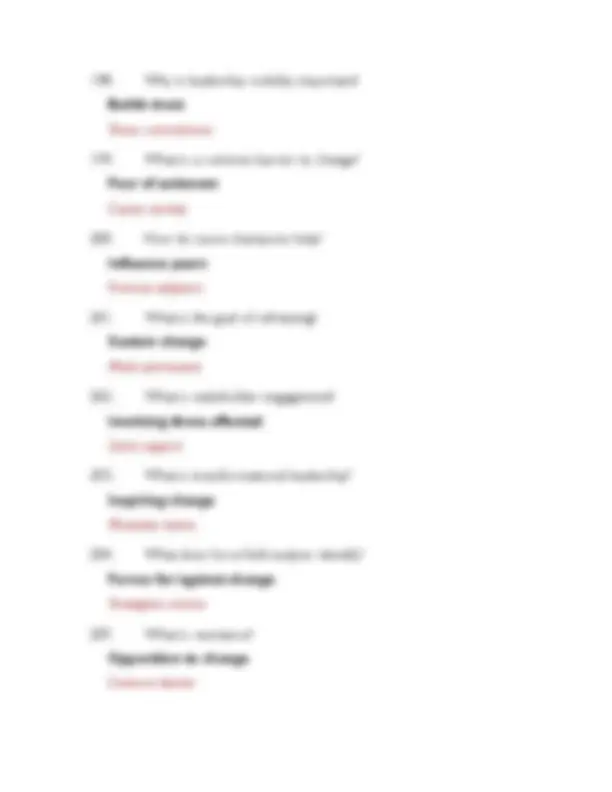

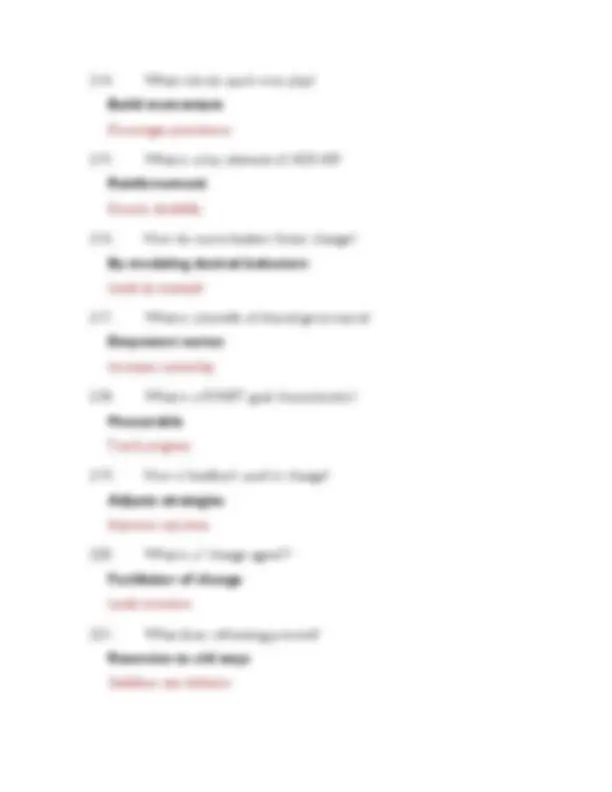

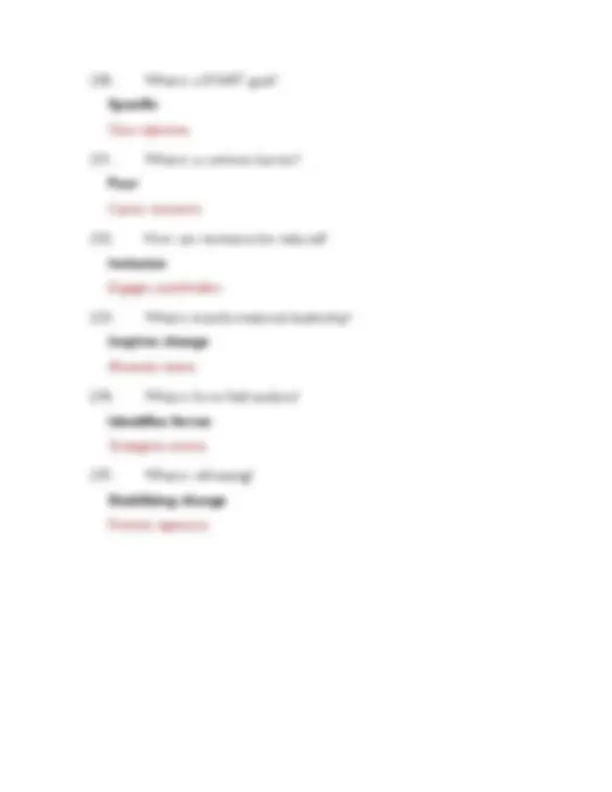


Study with the several resources on Docsity

Earn points by helping other students or get them with a premium plan


Prepare for your exams
Study with the several resources on Docsity

Earn points to download
Earn points by helping other students or get them with a premium plan
Community
Ask the community for help and clear up your study doubts
Discover the best universities in your country according to Docsity users
Free resources
Download our free guides on studying techniques, anxiety management strategies, and thesis advice from Docsity tutors
NUR4455/N4455 Module 1 Assignment: Change Theories Project, focused on nursing change theories, application, leadership roles, and project planning in nursing practice (University of Texas-Arlington)
Typology: Exams
1 / 31

This page cannot be seen from the preview
Don't miss anything!
























Lippitt’s Change Theory Lippitt emphasized the importance of communication, leadership roles, and stakeholder participation in seven phases.